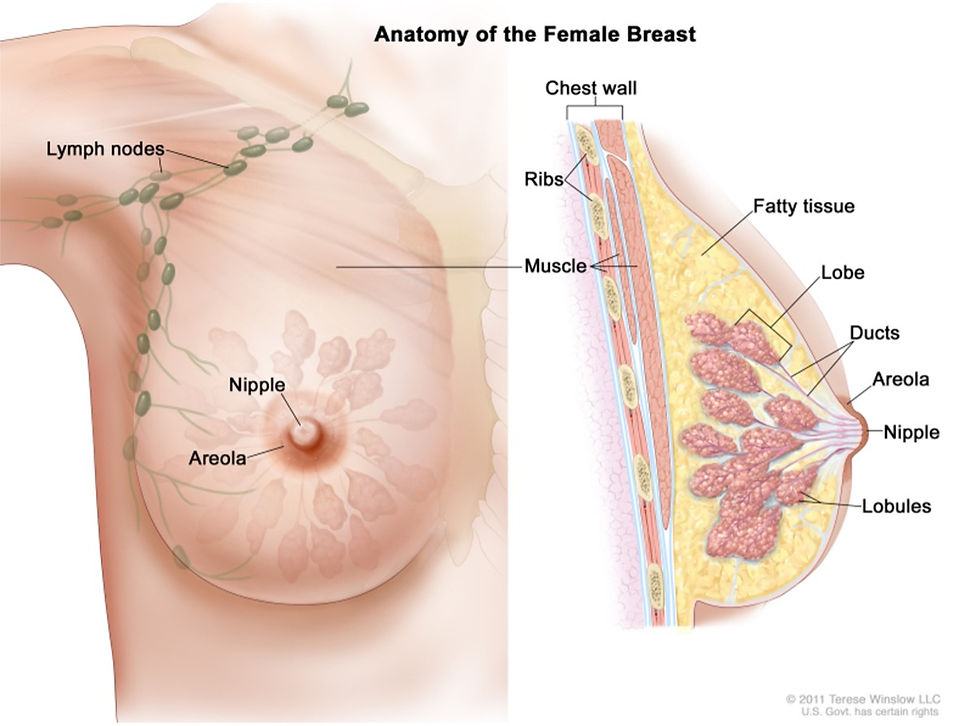How Does Milk Supply Work?
- Alicia McMahon

- Jun 8, 2021
- 2 min read
Updated: Jun 21, 2024
After you birth your baby, your breasts are working hard to ensure you have a milk supply to feed your baby! This requires a lot of growth in a very short amount of time and can be uncomfortable.
During pregnancy your breasts will have been preparing for breastfeeding. All the right parts are there, but your breasts will expand their network of ducts and lobes.
Think of these like a bunch of grapes. The grapes are the lobes – they store breastmilk. The branches are the ducts – these are the tubes that transfer milk between the lobes and the nipple.

Breastmilk production starts in pregnancy. This is known as colostrum and provides your baby’s first food.
Breastmilk will transition from colostrum to transitional milk between 72 – 96 hours after birth. This is known as milk ‘coming in’. Transitional milk becomes mature milk around 2 weeks after birth.
When your milk comes in, the lobes in your breasts (the ‘grapes’) have to expand very rapidly to accommodate the sudden increase in breastmilk. This can cause swelling in the breasts due to the rapid tissue growth. Much the same as when you sprain your ankle, your body floods the area with extra blood and fluid in order to support the repair and growth of tissue.
In the first month after birth your body produces high levels of the hormone prolactin, to support breastmilk production and breastfeeding establishment. After the first month your prolactin levels will gradually return to normal. Your body uses this extra hormone support to establish your breastmilk storage capacity – this is the ‘building time’. The more you breastfeed, the more milk you will produce and the more ‘grapes’ you will build in your breasts.
Breastmilk production works on a supply and demand chain. The more milk you demand by emptying your breasts, the more your body will supply. The best way to do this is to feed your well, healthy baby on demand. Feeding to a schedule or pumping in between feeds will often lead to problems such as low supply or oversupply. Trust your baby and your body to work together to regulate your milk supply.
Want to more about infant feeding? Come along to our Infant Feeding Preparation Class!






Comments